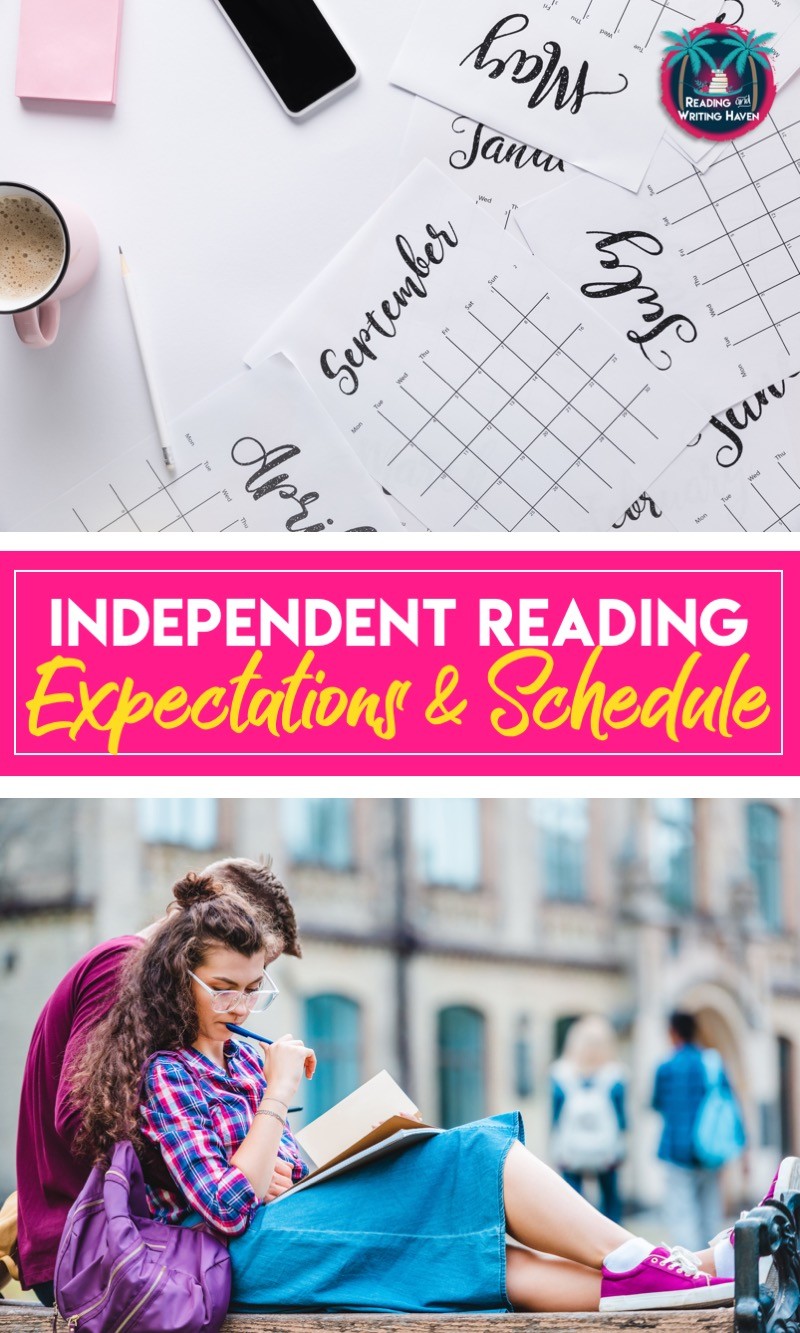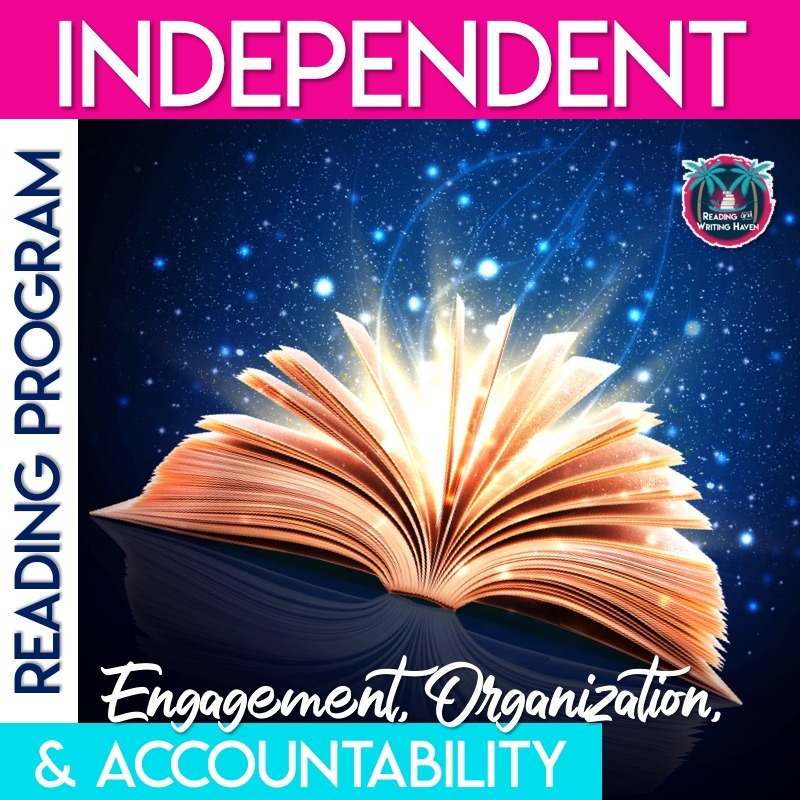Classroom Book Clubs: Establishing Independent Reading Expectations and Creating a Schedule
This article is the second in a three-part series about how to run classroom book clubs. Part 1 details information about why book club is critical and how to engage students, and Part 3 discusses assessment and accountability issues.
Once students are excited about book club (which they usually are when it’s introduced correctly), it’s time to establish expectations. I am very clear with my students that book club is an enrichment activity and that while it is an extension of what we do in class, and while it is meant to foster a reading culture and encourage a love for reading, it is still part of our course requirements. As such, they have to follow the guidelines.
As you experiment with book club, you’ll find different rules work for different types of classes. It’s always a process of trial and error, of getting to know your students, and of figuring out what motivates them. Above all, don’t get too comfortable. What works for you this year will most likely need to be tweaked next year.
I’m happy to share what I have learned about establishing expectations for book club in the classroom. Take what inspires you, tweak what you need to, and create an environment that is appropriate for your setting, your students, and your community.
ESTABLISHING EXPECTATIONS
After my first year experimenting with classroom book clubs, I learned how to clarify my expectations for students. I discovered simple things, like adjusting the way I phrased descriptions of assignments and expectations. When running a book club and allowing students to choose a text, it’s important to establish a culture in which students enjoy reading if we want the program as a whole to be a success.
Positive Framing
For example, instead of telling students they “had to” read one book per month, I began changing my wording to “you get to read one book per month, and then we all get to celebrate together by throwing a party for our achievement.” I put this positive spin on the experience because unlike most reading assignments where there would be a test or project due at the culmination of the unit, my literacy club is not connected to a formal summative assessment.
Successful Discussions
I learned it’s important to help students understand what it means to stay on task during discussion days. We talk about what discussion days should look like, sound like, and feel like. We discuss how long conversations should last, what roles each person could adopt, and what to do if attention strays away from the topic. Small groups would model effective and ineffective behaviors, and we would discuss them at large.
Abandoning Books
After the first month, I noticed that students would check out a book and sit on it for a while without reading much. Soon, I realized they didn’t like the book they had chosen, but they didn’t understand they weren’t married to that book. I began telling them I expected them to check out a different book if they didn’t enjoy the first one they checked out. Adults do that in real life. We don’t always finish every book we start. We talk about book fit and tracking reading, which makes abandoning books more of a metacognitive focal point.
Clear Guidelines
I learned I needed to have clear expectations about what texts students could and couldn’t read. For example, some students asked if they could read picture books. Others…50 Shades of Grey. Yet another – the Satanic Bible. Clearly, those weren’t going to fly. When reading independently, I explained to my students I expected them to:
- challenge themselves by reading a book they hadn’t read before.
- choose books that are at their reading level.
- ask for help if they couldn’t find a text they enjoyed.
- begin a new book immediately after finishing the first one (yes, some students read a handful of books in just one month…and willingly!)
- read the first few pages of the book before they checked it out to make sure they found it interesting and to make sure it wasn’t too easy or too frustrating for them.
Many of these expectations were on the honor system. I’d do my due diligence to make observations and talk to students about their books, but by constantly nagging them and playing the “I caught you!” game, the only thing I would have done would have been to ostracize them. That wasn’t my goal.
A Little Messiness is Okay
Did some students “get away” with not reading as much as I wanted them to? I’m sure. But. What about all of the students who did read more than they ordinarily would have? Those students who were inspired and who learned that reading is enjoyable and a lifelong hobby…that made it worth the effort. Plus, the handful of students who might not have read much…they had a book in their hands. That’s progress.
Extending Reading Time
Finally, I made sure they knew that I considered their novel a third arm. Not only did I want them to bring it to English class, but also I wanted them to take it with them everywhere they went. If they had extra time in P.E. or math class, I wanted them to pull out that book and read it! This approach teaches students to be efficient and productive with their spare time. Here’s a quick mini lesson for helping students prioritize reading as a habit.
KEEPING PARENTS INFORMED
I’ve always found it important to keep parents informed about classroom book clubs early on. I send home a letter with details, including the purpose and benefits of the unit, monthly themes, and tips for how parents can support their children. I also include suggested titles, explanations of scaffolding I’m providing in the classroom, and recommendations for how parents can talk with their students about the importance of reading.
Notifying them at the beginning of the year is not enough, in my opinion. Rather, we need to stay in touch with parents throughout the book club experience. I’ve found that sending texts through Remind 101 is a beneficial way to notify parents about reading recommendations, pacing suggestions, choice assignments, and due dates.
Most importantly, the best strategy to increase student participation and accountability (more on accountability in Part 3) is to call parents whenever you think one of your teens is slacking. Parents are the most powerful partner teachers have in the war against apathy. Every time I’ve called home about a student who was not reading, I’ve talked to supportive parents who would at least going to try to get their child back on track. In fact, many of them agreed to have their child come in early or stay after school to make up for lost reading time (in the event a student isn’t reading during class or makes a habit out of forgetting his or her book).
CREATING A SCHEDULE
Depending on your class schedule and structure, your classroom book clubs might look entirely different than mine. I have found it most successful to give students a month to read their novel. After all, it is something I’m asking them to do on top of their regular workload. If I can read a book a month while grading essays, working full time, and parenting three small children, I know they can read a book a month on top of their responsibilities if they make time to do so. I talk to my students about when and how I make time to read in this fast-paced world, and I ask them to share their tricks as well.
Day 1
On the first day of the month (or as close to it as possible), I introduce the genre we will be studying. I give them a short set of notes, which are partially developed through class discussion, and then we read an example of that particular genre together, analyzing it as we go. Sometimes, we will play a game or complete an activity related to that genre instead.
Day 2
On the second day (usually I try to schedule it for the day following the genre study), I invite the school librarian in to give book talks. If she is not available for some reason, I do the book talks myself, and I use book trailers from online to supplement my existing knowledge base.
Day 3-29
By Day 3, the goal is that students will have selected and checked out their novel for the month. During this time, students bring their novels to class every single day. I give them the first 10 minutes of each class period to read and confer with me. Independent reading is an investment that allows us to set differentiated goals for our students and better get to know our readers. It’s also a tangible way I can show them how much it matters to me that they read.
After each reading period, I do one of two things. Sometimes, I share something from the novel I’m reading. Other times, I ask for student volunteers to share something about their book. Depending on how students seem to be coming along with their novels, I also sprinkle in somewhere between 2 and 4 written response assignments to coincide with their reading.
Day 30
P-A-R-T-Y! On the last day of the month, my students look forward to meeting together in book club groups to talk about their novels. Usually, they have all read something different, but they have the genre in common. I give them a list of questions or task cards to discuss, and as they talk, I rotate around from group to group listening, asking questions, and informally conferencing with students. Party days are always fun. Students get to bring in food, which they enjoy! And, while talking, they listen to some light background music.
To read about how to hold students accountable in classroom book clubs, how to assess independent reading, and how to behave as the teacher facilitating all of these individual novels, please read Part 3: Assessment and Accountability.
RELATED RESOURCE:
This is the unit I created to run meaningful classroom book clubs.

